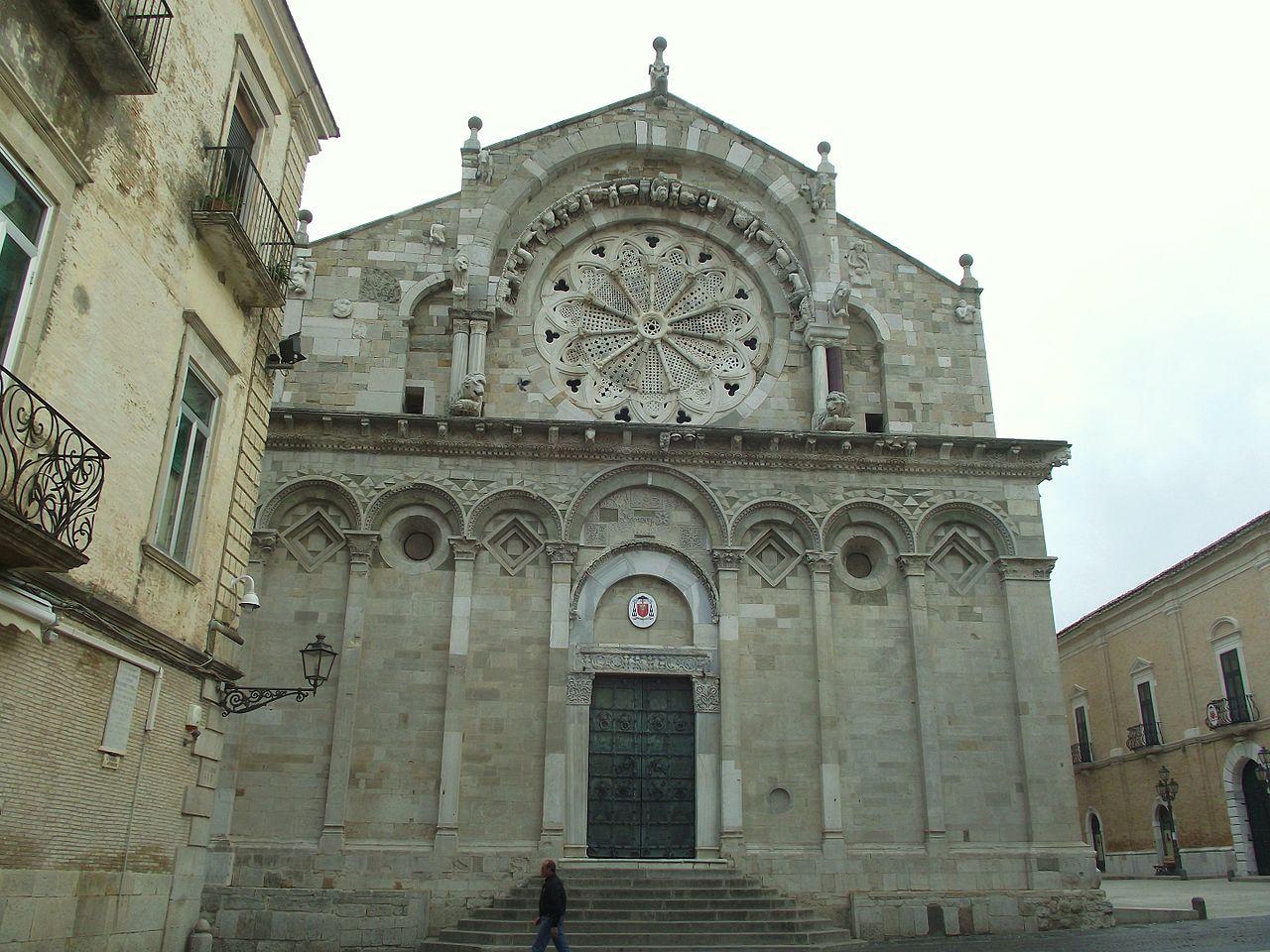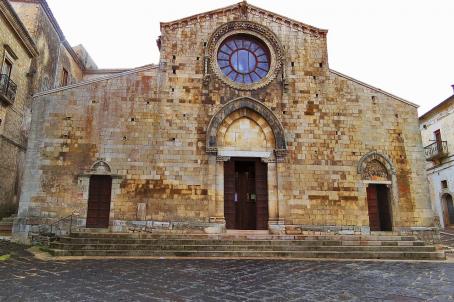Troia Cathedral
Troia Cathedral is a Latin cross building built between 1093 and 1125. The building, of undeniable architectural interest, is dedicated to the Virgin Mary assumed into heaven and is built in the Pugliese Romanesque style. The church was built on the basis of a pre-existing Byzantine building and with reused materials from the ancient Roman town. In the 13th century the presbytery was first completed by the construction of the cross vault of the choir and then the rose windows on the main façade were built.






